Abstract
Halogenated hydrocarbons have been successfully utilized for pest control in agriculture and public health. In industry, the polychlorinated biphenyls (PCBs) have been particularly useful. Unfortunately, residues have proven persistent and have been found widely dispersed in the environment. Because they have chemical properties that favor bioaccumulation, it is not surprising that many have been identified in animals and man. Such findings prompted public health concern and initiated review of potential adverse health impacts. In many instances this process has led to total prohibition of use or strict limitations. Highly lipophilic, the primary accumulation site in humans is adipose tissue. Analysis of adipose samples remains the preferred biologic index for estimating exposure. Improved instrumentation has lowered the limit of detection and improved the accuracy of quantification. Accumulated population experience has helped develop understanding of the dynamics of tissue partitioning in humans. Once such relationships have been adequately described, other less invasive procedures may be more confidently used for general surveillance purposes. Whenever adipose tissue is obtained, the blood compartment should also be sampled and the relationship reported. We have only begun to investigate the resulting partition ratio as an investigative tool.
Full text
PDF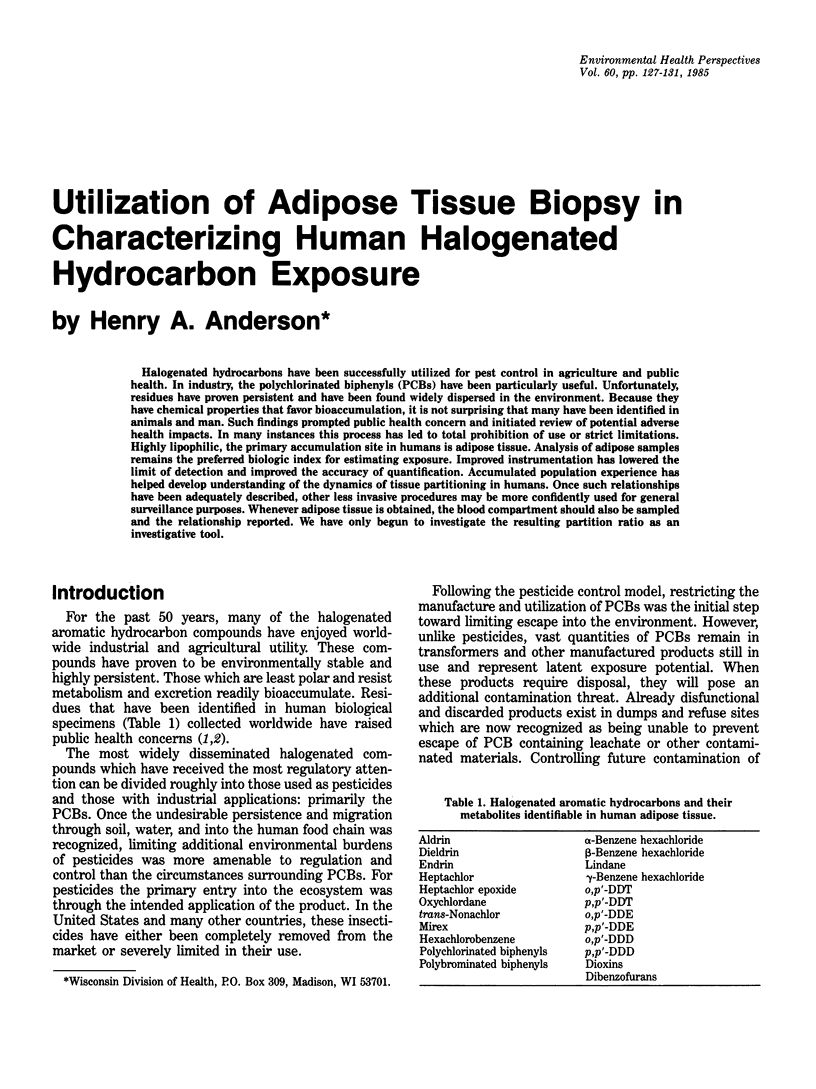
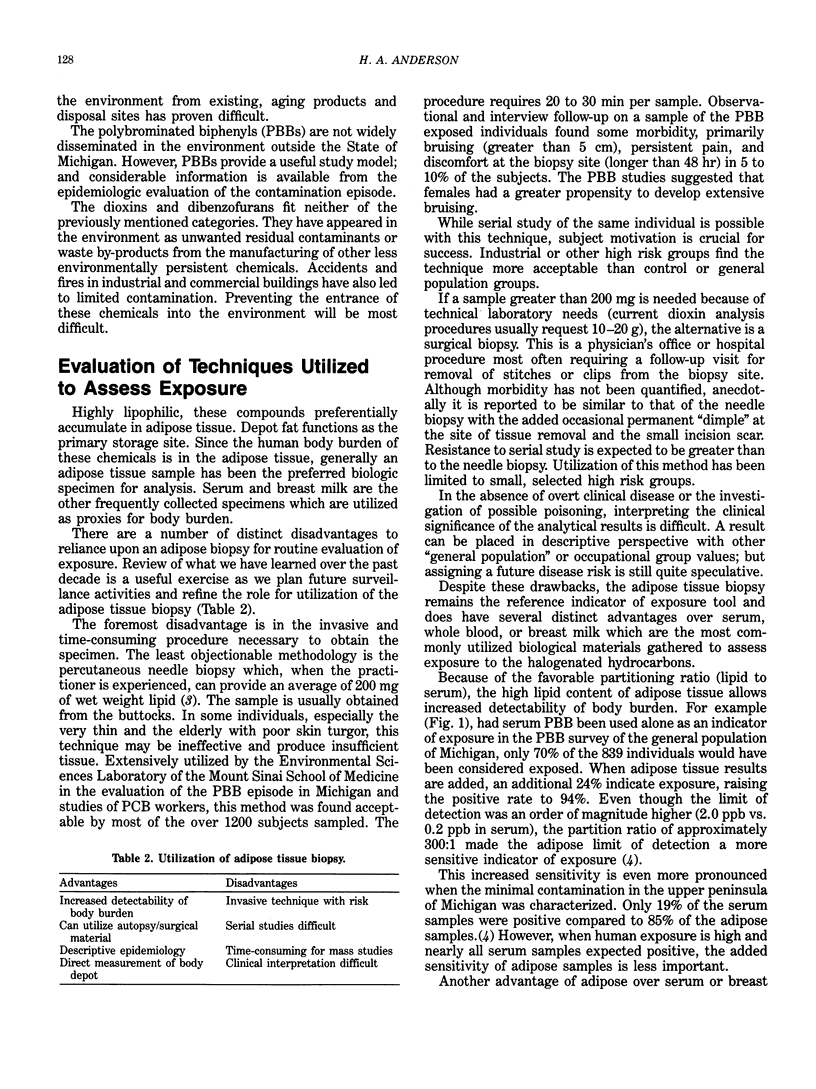
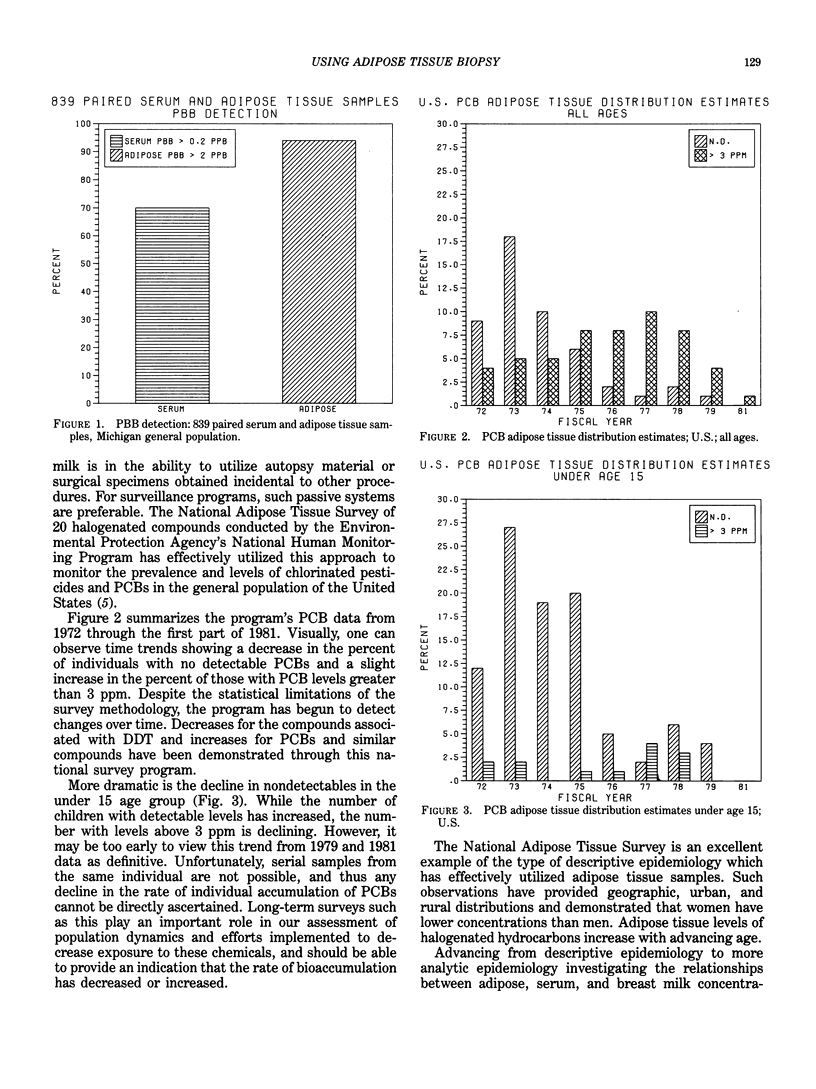
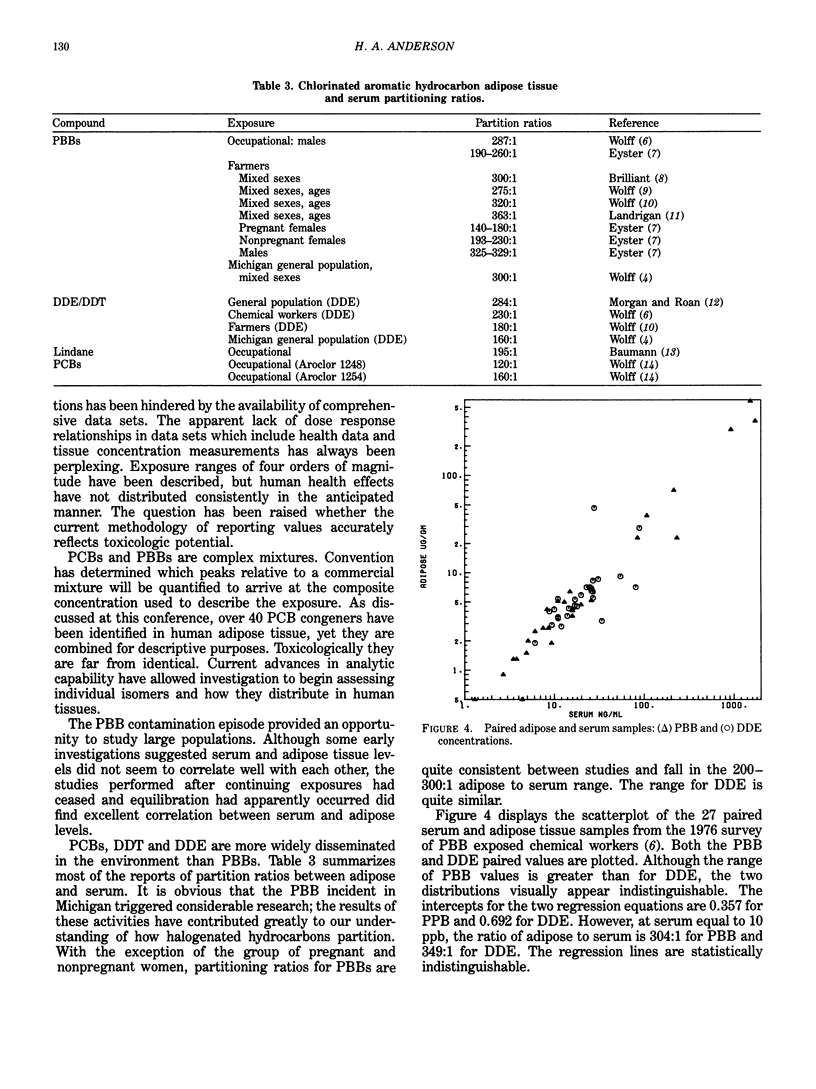
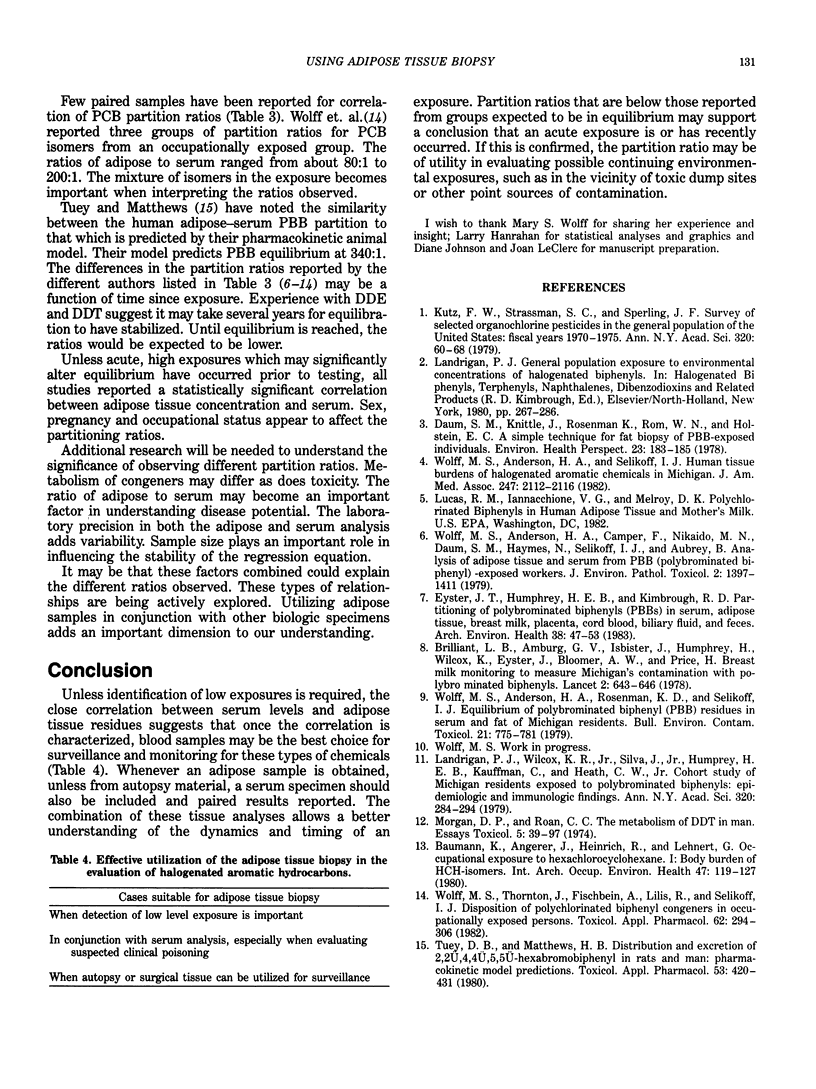
Selected References
These references are in PubMed. This may not be the complete list of references from this article.
- Baumann K., Angerer J., Heinrich R., Lehnert G. Occupational exposure to hexachlorocyclohexane. I. Body burden of HCH-isomers. Int Arch Occup Environ Health. 1980;47(2):119–127. doi: 10.1007/BF00716371. [DOI] [PubMed] [Google Scholar]
- Brilliant L. B., Wilcox K., Van Amburg G., Eyster J., Isbister J., Bloomer A. W., Humphrey H., Price H. Breast-milk monitoring to measure Michigan's contamination with polybrominated biphenyls. Lancet. 1978 Sep 23;2(8091):643–646. doi: 10.1016/s0140-6736(78)92758-7. [DOI] [PubMed] [Google Scholar]
- Daum S. M., Knittle J., Roseman K., Rom W. N., Holstein E. C. A simple technique for fat biopsy of PBB-exposed individuals. Environ Health Perspect. 1978 Apr;23:183–185. doi: 10.1289/ehp.7823183. [DOI] [PMC free article] [PubMed] [Google Scholar]
- Eyster J. T., Humphrey H. E., Kimbrough R. D. Partitioning of polybrominated biphenyls (PBBs) in serum, adipose tissue, breast milk, placenta, cord blood, biliary fluid, and feces. Arch Environ Health. 1983 Jan-Feb;38(1):47–53. doi: 10.1080/00039896.1983.10543978. [DOI] [PubMed] [Google Scholar]
- Kutz F. W., Strassman S. C., Sperling J. F. Survey of selected organochlorine pesticides in the general population of the United States: fiscal years 1970-1975. Ann N Y Acad Sci. 1979 May 31;320:60–68. doi: 10.1111/j.1749-6632.1979.tb56593.x. [DOI] [PubMed] [Google Scholar]
- Landrigan P. J., Wilcox K. R., Jr, Silva J., Jr, Humphrey H. E., Kauffman C., Heath C. W., Jr Cohort study of Michigan residents exposed to polybrominated biphenyls: epidemiologic and immunologic findings. Ann N Y Acad Sci. 1979 May 31;320:284–294. doi: 10.1111/j.1749-6632.1979.tb56611.x. [DOI] [PubMed] [Google Scholar]
- Tuey D. B., Matthews H. B. Distribution and excretion of 2,2',4,4',5,5'-hexabromobiphenyl in rats and man: pharmacokinetic model predictions. Toxicol Appl Pharmacol. 1980 May;53(3):420–431. doi: 10.1016/0041-008x(80)90355-5. [DOI] [PubMed] [Google Scholar]
- Wolff M. S., Anderson H. A., Camper F., Nikaido M. N., Daum S. M., Haymes N., Selikoff I. J., Aubrey B. Analysis of adipose tissue and serum from PBB (polybrominated biphenyl)-exposed workers. J Environ Pathol Toxicol. 1979 Jul-Aug;2(6):1397–1411. [PubMed] [Google Scholar]
- Wolff M. S., Anderson H. A., Rosenman K. D., Selikoff I. J. Equilibrium of polybrominated biphenyl (PBB) residues in serum and fat of Michigan residents. Bull Environ Contam Toxicol. 1979 Apr;21(6):775–781. doi: 10.1007/BF01685504. [DOI] [PubMed] [Google Scholar]
- Wolff M. S., Anderson H. A., Selikoff I. J. Human tissue burdens of halogenated aromatic chemicals in Michigan. JAMA. 1982 Apr 16;247(15):2112–2116. [PubMed] [Google Scholar]
- Wolff M. S., Thornton J., Fischbein A., Lilis R., Selikoff I. J. Disposition of polychlorinated biphenyl congeners in occupationally exposed persons. Toxicol Appl Pharmacol. 1982 Feb;62(2):294–306. doi: 10.1016/0041-008x(82)90128-4. [DOI] [PubMed] [Google Scholar]


